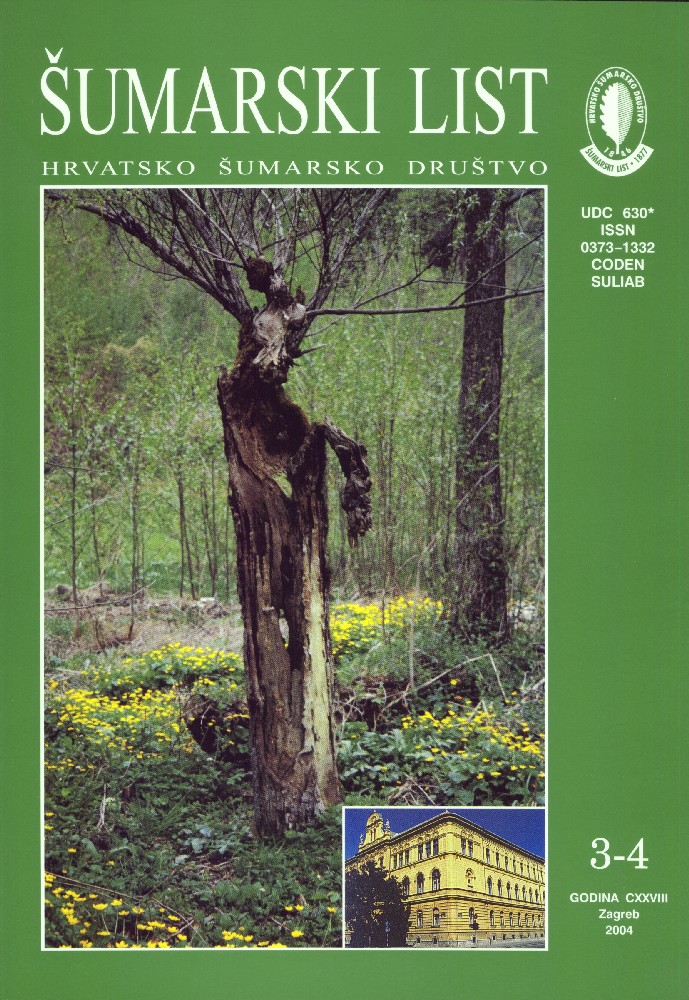Summary: Riparian forests are currently the most seriously endangered European forests (Maltby and Dugan, 1985). These forests extend along the banks and in the immediate vicinity of rivers and their islands and are periodically flooded. In terms of diversity of plant and of animal world in particular, they rank among the richest European continental biocoenoses. The principal tree species in natural riparian forests are autochthonous willow and poplar species. The oscillatory dynamics of mostly flood waters favours the development of numerous hygrophilous and xerophilous plant species. After the river Drava, the river Mura is undoubtedly the second largest watercourse in Upper Podravina. Whereas the natural course of the river Drava has been considerably changed by 23 hydropower stations (twelve in Austria, eight in Slovenia and three in the Republic of Croatia), the course of the river Mura has remained relatively intact. Since willow seeds, excepting those of the almond willow, mature in May in places where water has retreated in spring and mud and sand have deposited, seeds germinate in the course of several hours. In such places a thick willow young growth develops which may contain about 830,000 plants/ha (Table 10). The number of plants in the young growth dramatically declines in the first three years, so that in the second year it drops to 11 %, and in the third to 2.7 % of the amount in the first year (Table 11 and 12). Almond willow, which in these areas does not display the properties of a shrub but of a tree, proved to be one of the key species in the formation of the young growth and thus plays a crucial role in the structure of young and middle-aged stands. Young riparian stands may be formed like pure stands of almond willow in which wood mass may amount to as much as 243.00 m3/ha.In older stands, the almond willow is replaced by the white willow, but it may be retained in the understorey. In applying silvicultural treatments to willow stands, foresters should show expertise in discriminating almond willows. Its biological properties make this tree species a true pioneer in conquering the terrain. It regularly bears seeds over the entire summer period until mid-September and thus creates young willow growths on fertile mud and sand. If floods are not of long duration, the young growths survive and form stands, which in their short lives create considerable biomass that falls on the ground. In this way they participate in the formation of humus and mineral nutrients. It is very important to be aware of these properties when silvicultural treatments of tending and cleaning are conducted. The wood material from tending and cleaning the young growth of riparian forests should remain on the ground so that, due to the biomass fallen on the soil during floods, sand and mud could be deposited. The ground is thus “raised” and the conditions created for the occurrence of the white willow, which is in fact the most valuable economic species in these forests. Almond willow, together with white willow, forms normal riparian stands to which all silvicultural treatments should be applied taking account of biological specificities of each species. In the optimal stage with a regular water regime, white willow produces a considerable growing stock (up to 368.11 m3/ha), and may consequently be considered a valuable economic species of riparian forests. In terms of structure, middle-aged stands of riparian forests in Podravina display similarities with those in Podunavlje since willow is accompanied by black poplar. Riparian forests of a virgin structure are not rich in woody species as are other forests. In terms of structure, riparian forests may be developed as pure stands featuring only one species (for example, almond willow), or the principal species may be sporadically accompanied by another species (for example, white willow with black poplar or white willow with grey alder). In sites where water dynamics is not stable, natural riparian forests may exhibit the structure of mixed stands in which it is sometimes difficult to identify the dominant tree in the stand (usually two species), while the understorey may be formed by four to six species. The shrub layer is not significantly developed in the studied stands.
Key words: riparian forests; young willow growth; stand structure; almond willow (Salix triandra); white willow (Salix alba); black poplar (Populus nigra); white poplar (Populus alba); alder (Alnus glutinosa); grey alder (Alnus incana); shrub layer |



